Biology > QUESTIONS & ANSWERS > APUS CLE : SCIN130 B011 Quiz 8 | (31 Q & A Solutions) | Ecology, Biodiversity | Already GRADED A+ (All)
APUS CLE : SCIN130 B011 Quiz 8 | (31 Q & A Solutions) | Ecology, Biodiversity | Already GRADED A+
Document Content and Description Below
APUS CLE : SCIN130 B011 Quiz 8 Part 1 of 7 - Chapter 20 27.0 Points Question 1 of 31 3.0 Points A wolf is an example of what member of the food chain? • A. apex consumer • ... B. secondary consumer • C. producer • D. tertiary consumer • E. primary consumer Feedback:The organism that is at the top of the food chain has no predators. Review energy flow through ecosystems in Chapter 20. Question 2 of 31 3.0 Points Why are those at the top of a food chain affected if a species at the bottom of the food chain consumes a toxin? A. species at the top eat more • B. species at the bottom enjoy toxins • C. water availability decreases • D. fat soluble compounds biomagnify Feedback:Great job. Question 3 of 31 3.0 Points Temperature and precipitation are examples of what in an environment? • A. biotic factor • B. essential factor C. abiotic factor • D. living factor Feedback:Biotic factors are those that are living. Review terrestrial biomes in Chapter 20. Question 4 of 31 3.0 Points Because the desert has extreme temperatures and a shortage of water, what type of net primary productivity does it have? • A. low • B. medium • C. high • D. productive Feedback:Great job. Question 5 of 31 3.0 Points What happens to the amount of energy as it moves between trophic levels? • A. increases • B. stable • C. decreases • D. no change Feedback:Great job. Question 6 of 31 3.0 Points Because the tropical rainforest has warm temperatures, abundant water, and a year-round growing season, what type of net primary productivity does it have? • A. high • B. medium • C. productive • D. low Feedback:Great job. Question 7 of 31 3.0 Points What term describes the energy that remains in the producers after accounting for respiration and heat loss? • A. net primary productivity • B. gross primary productivity • C. grazing food web • D. detrital food web Feedback:Great job. Question 8 of 31 3.0 Points What is the area of Earth where water movement and storage occurs? • A. atmosphere • B. troposphere • C. hydrosphere • D. stratosphere Feedback:Great job. Question 9 of 31 3.0 Points What is a food web that includes decomposers and detritivores called? • A. Carnivorous food web B. Detrital food web • C. Herbivorous food web • D. Grazing food web Feedback:Great job. Part 2 of 7 - Chapter 21 27.0 Points Question 10 of 31 3.0 Points Several pet Burmese pythons escape a breeding facility when a hurricane destroys the building. With a limited number of predators their population quickly grows. Declines in native animal populations are severe. This is an example of what? • A. habitat loss • B. climate change • C. exotic species D. overharvesting Feedback:Great job. Question 11 of 31 3.0 Points If the climate change warming trend continues which of the following will you not expect to see? • A. raising ocean levels • B. an estimated 15-40% extinction of all species by 2050 • C. less crowding in species higher in altitude • D. new overlapping competitive regimes • E. changes in regional rainfall and snow patterns Feedback:As the climate warms, species will have to move to areas that are cooler – which usually occur at higher elevations. Review Chapter 21. Question 12 of 31 3.0 Points Biodiversity does NOT include what? • A. chemical diversity • B. geological diversity • C. genetic diversity • D. ecosystem diversity Feedback:Great job. Question 13 of 31 3.0 Points Which of the following is not in effect in the US that helps regulate human and corporate behavior for conservation of biodiversity? • A. the Endangered Species Act B. the Kyoto Protocol • C. MBTA • D. CITES Feedback:Understanding the acronyms, as well as the local regulations, is important for understanding the purpose of any act. Review Chapter 21. Question 14 of 31 3.0 Points What kind of diversity directly leads to chemical diversity? • A. genetic • B. ecosystem • C. habitat D. species Feedback:Great job. Question 15 of 31 3.0 Points Biodiversity does not increase: • A. where there are more ecological niches • B. where endemic species are found • C. when ecosystems are older • D. when latitude increases Feedback:The rainforests have the highest biodiversity, and are generally located near the equator. Review Chapter 21. Question 16 of 31 3.0 Points Which of the following has the lowest relative abundance of species? A. A desert with 12 different species of insects • B. A coral reef with 36 fish, which include 10 different species • C. A prairie with 5 different species of grass • D. A forest with 25 trees, which include 2 different species Feedback:Relative abundance refers to how rare or common a species is relative to other species, so the distribution is important here. Review Chapter 21. Question 17 of 31 3.0 Points You have been designated to choose a place for a wildlife and ecosystem preserve. You want to choose a biodiversity hot spot. Which location would you choose? • A. Canadian temperate forest • B. Subtropical desert C. Indo-Burma rainforest • D. Scandinavian taiga Feedback:In general, the greatest biodiversity can be found in rainforests. Review Chapter 21. Question 18 of 31 3.0 Points What is the estimated rate of extinction? • A. 1500-2000 times background rate • B. 5-10 times the background rate • C. 500-1000 times background rate • D. 50-100 times the background rate Feedback:The estimated rate of extinction occurs naturally, so is compared to the background rate. Review Chapter 21. Part 3 of 7 - Lecture ELF 9.0 Points Question 19 of 31 3.0 Points What are some of the environmental consequences to the reintroduction of wolves in Yellowstone? • A. Beavers are consuming more cottonwoods due to the increase in blooms. • B. River shapes and patterns have become more stable with more pools and riffle sections. • C. There has been a noticeable decrease in the number of tourists to the area due to fright. • D. All elk and songbird populations are in decline due to the high amount of predation. Feedback:The reintroduction of wolves has benefited the Yellowstone area by keeping herbivore populations in check, amongst other benefits. Review Ecosystems in the Weekly Lecture Lesson. Question 20 of 31 3.0 Points What is the biggest difference between primary and secondary succession? A. the presence of fire • B. the presence of light • C. the presence of soil • D. the presence of animals Feedback:Great job! Question 21 of 31 3.0 Points Which ecosystem would have a higher diversity value? • A. A forest with 500 trees, consisting of 10 different species. • B. A forest with 1,000 trees, all of which are the same. C. A forest with 500 trees, all of which are the same. • D. A forest with 1,000 trees, consisting of 2 different species. Feedback:Great job! Part 4 of 7 - Part 3: Lab ELF 9.0 Points Question 22 of 31 3.0 Points Which part of the scientific manuscript contains typically contains graphs and figures? • A. Conclusion • B. Discussion • C. Results • D. Methods E. Introduction Feedback:Correct! This section of a scientific paper presents the statistical results from the study and may include data presented in figures or graphs. Question 23 of 31 3.0 Points Which section in a scientific manuscript provides the most important information and is generally the shortest? • A. Methods • B. Discussion • C. Results • D. Introduction Feedback:Correct! Although this section is not long, a simple presentation of only the data from the experiment is important for others in the scientific community to review. Question 24 of 31 3.0 Points In a series of experiments the following data table for number of hits vs. trial was constructed. If a graph was created and the linear regression trendline was found to be y = 86.6x – 52. If you were to use this equation to predict the number of hits on Trial 6, what would the value be? Trial Number of Hits 1 38 2 100 3 240 4 280 • A. 398 • B. 356 • C. 722 • D. 468 Feedback: A regression line is a straight line that attempts to predict the relationship between two points. Part 5 of 7 - Lab Material 15.0 Points Question 25 of 31 3.0 Points How can you tell if an allele is homozygous by looking at an agarose gel? • A. There are many bands • B. There are no bands • C. There are two bands • D. There is only one band Feedback:Review Lab 8: CSI Case 2 Question 26 of 31 3.0 Points What country did Wasser’s team trace the poached ivory to? • A. Namibia • B. Tanzania • C. Zimbabwe • D. The DRC • E. Kenya Feedback:Great. Question 27 of 31 3.0 Points How many elephants are estimated to be slaughtered each year? • A. 100,000 • B. 50,000 • C. 250,000 D. 1 million Feedback:Great. Question 28 of 31 3.0 Points What were we looking at in this case in order to determine the location of the poached elephants? • A. presence of forages in the stomach • B. color of seized ivory compared to wild • C. absence of empathy • D. presence or absence of alleles Feedback:Great. Question 29 of 31 3.0 Points The differences in allele frequency is due to both length of time species are separated as well as what? A. color of ivory • B. type of meals • C. geographic distance • D. size of family Feedback:Great. [Show More]
Last updated: 1 year ago
Preview 1 out of 22 pages
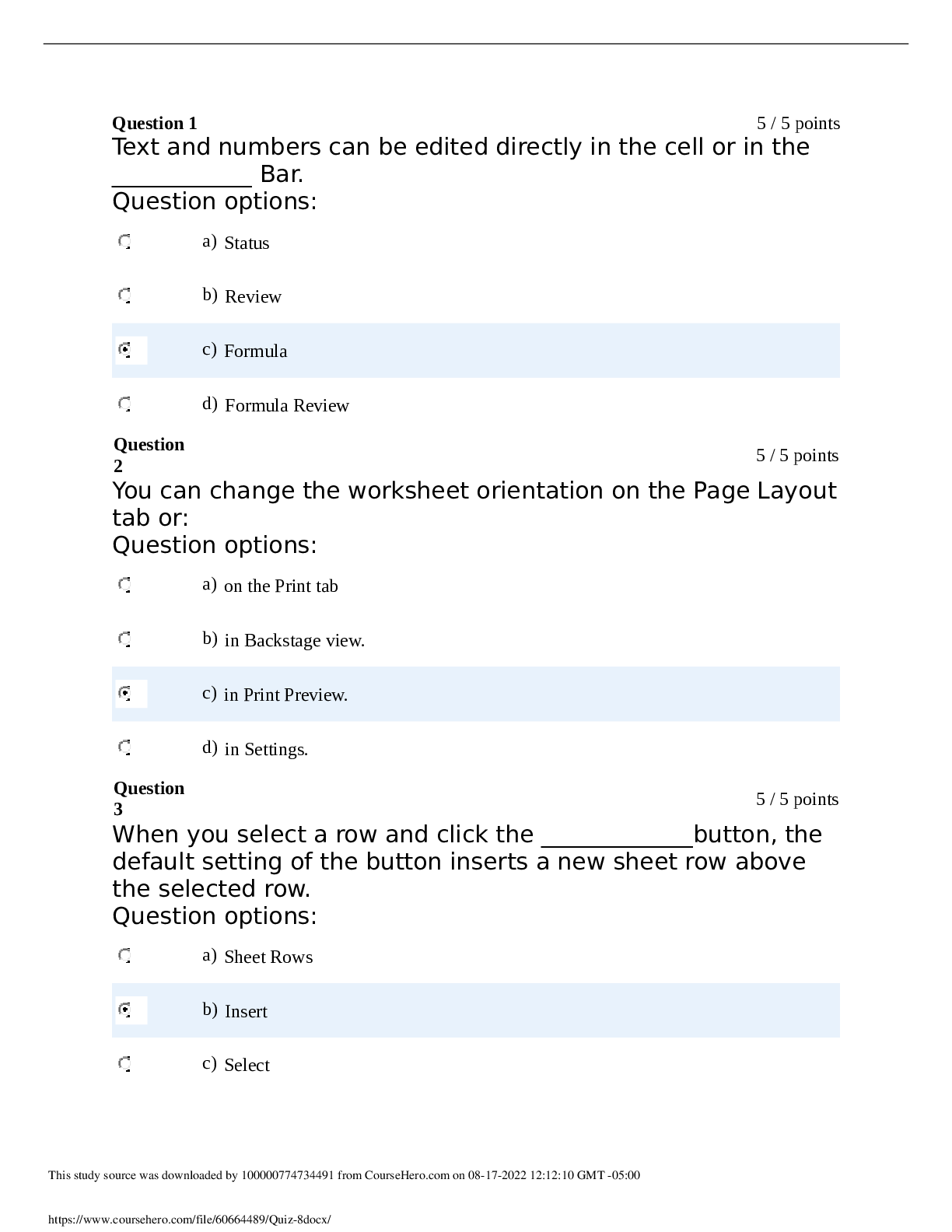
Reviews( 0 )
Document information
Connected school, study & course
About the document
Uploaded On
Sep 24, 2021
Number of pages
22
Written in
Additional information
This document has been written for:
Uploaded
Sep 24, 2021
Downloads
0
Views
52


 And LETRS Unit 8 Final Assessment Test.png)

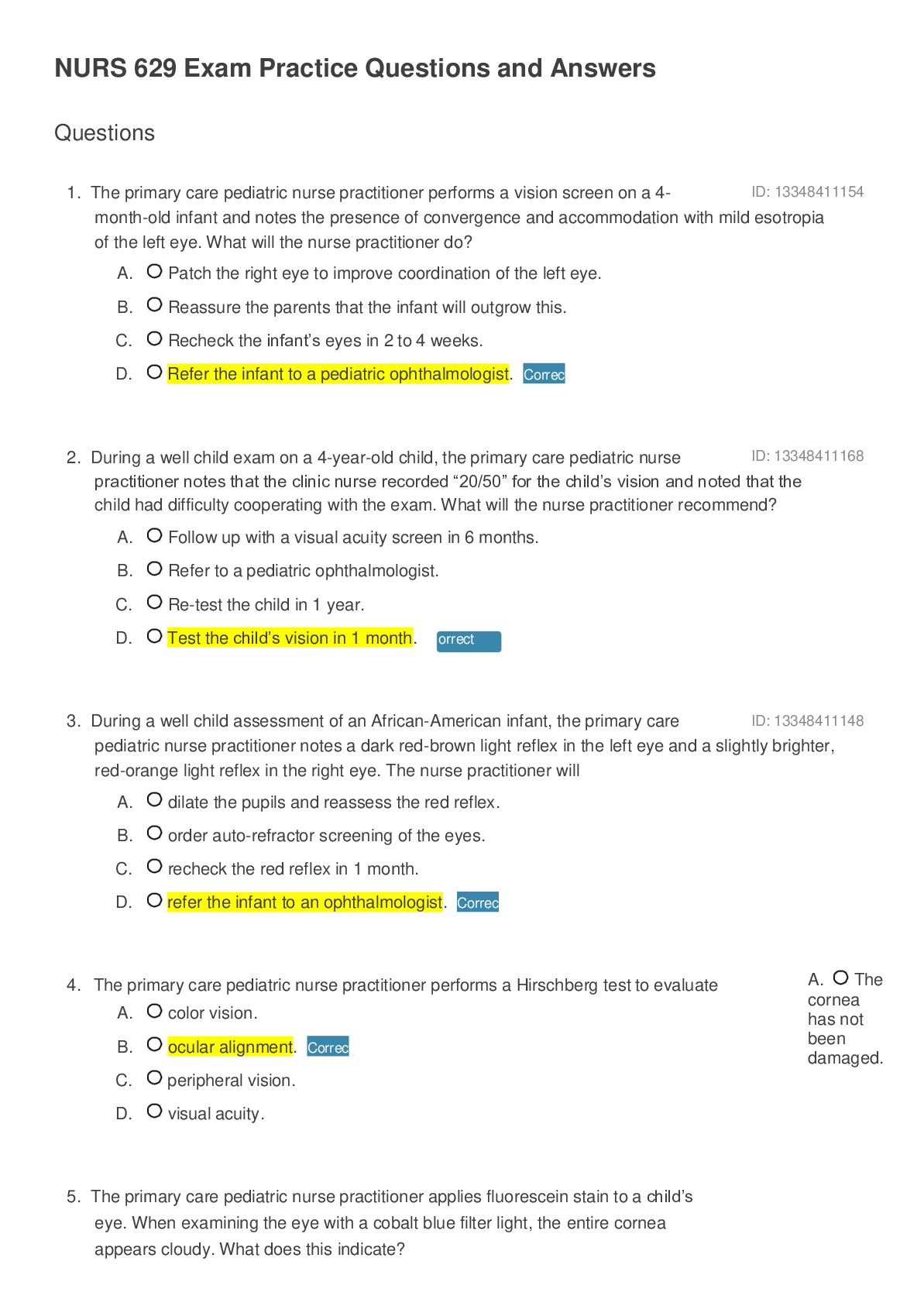



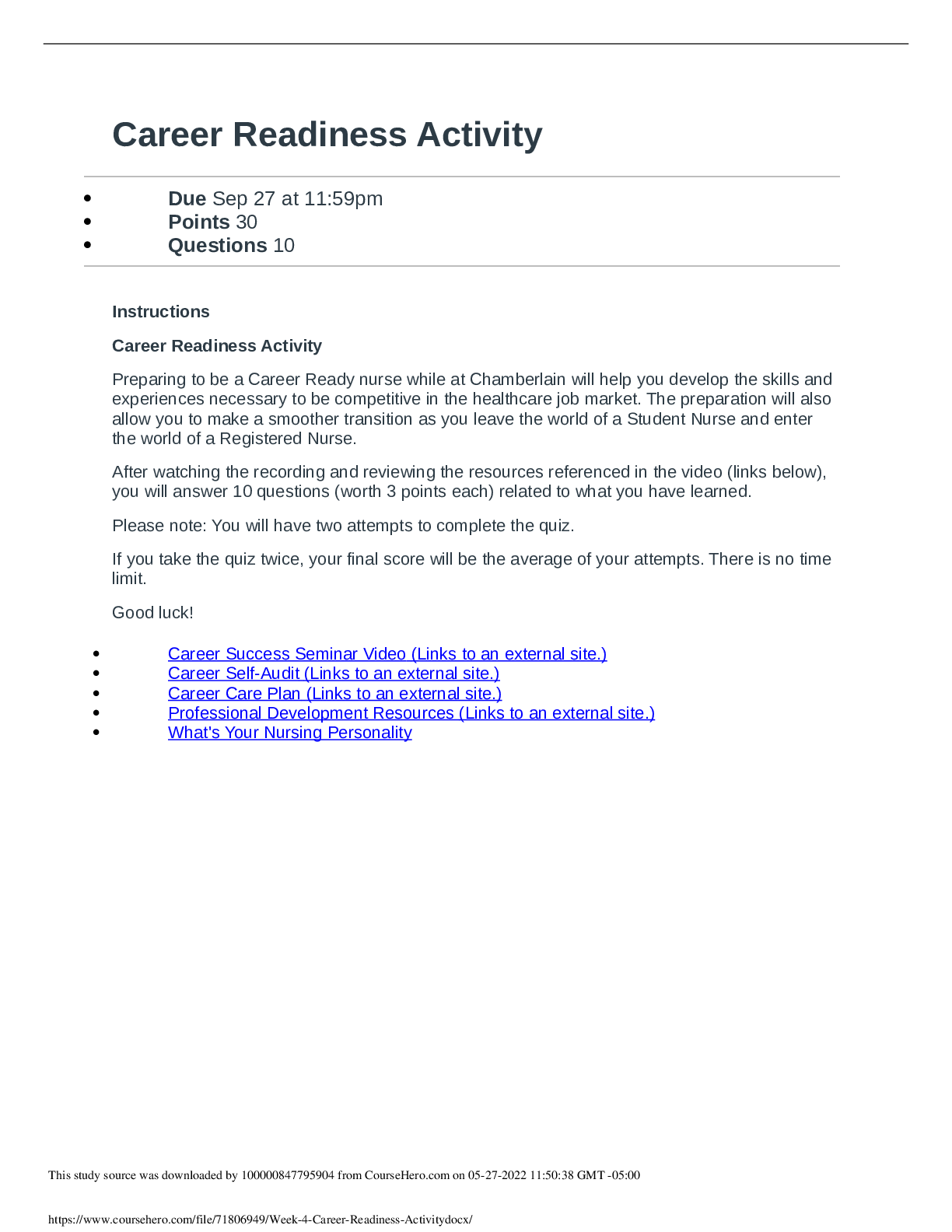

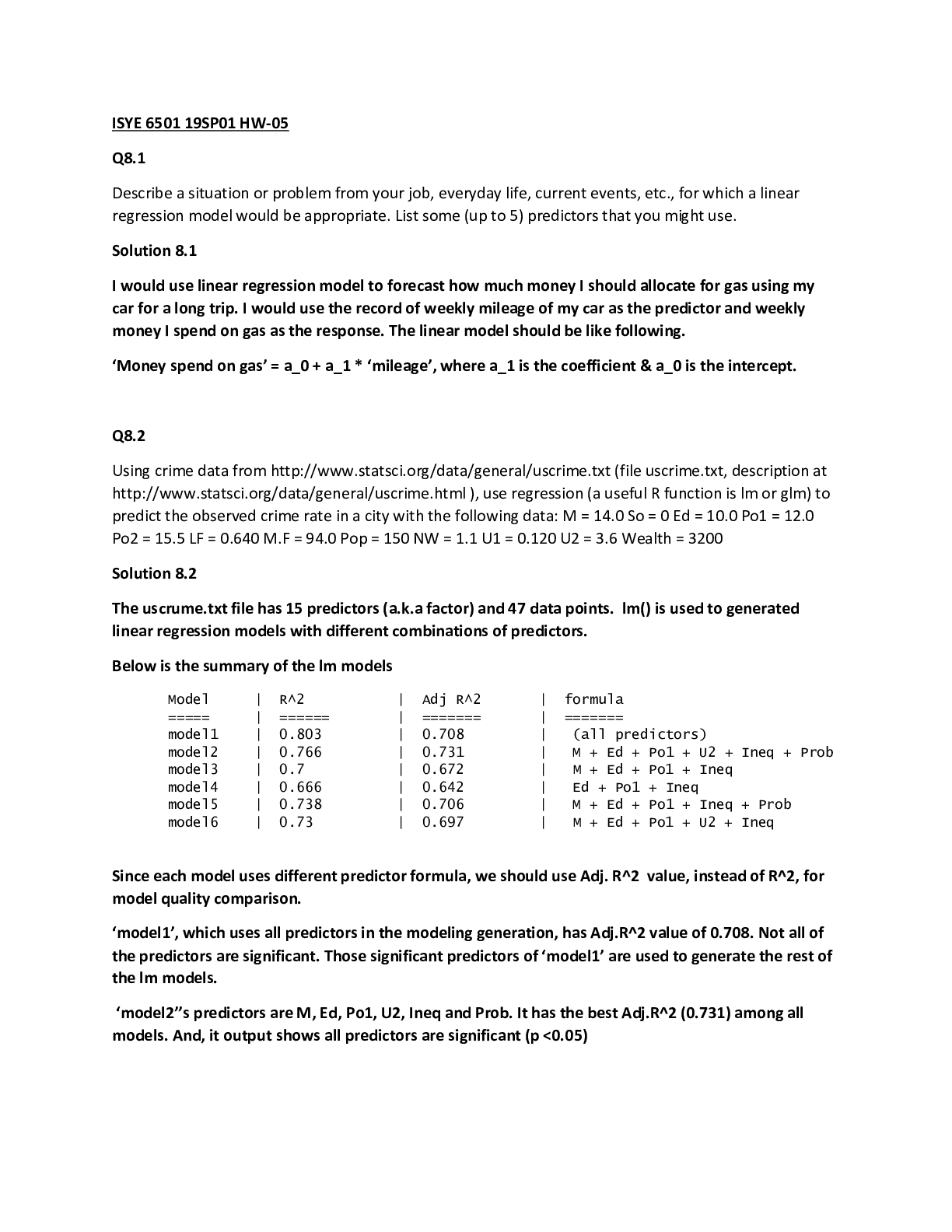


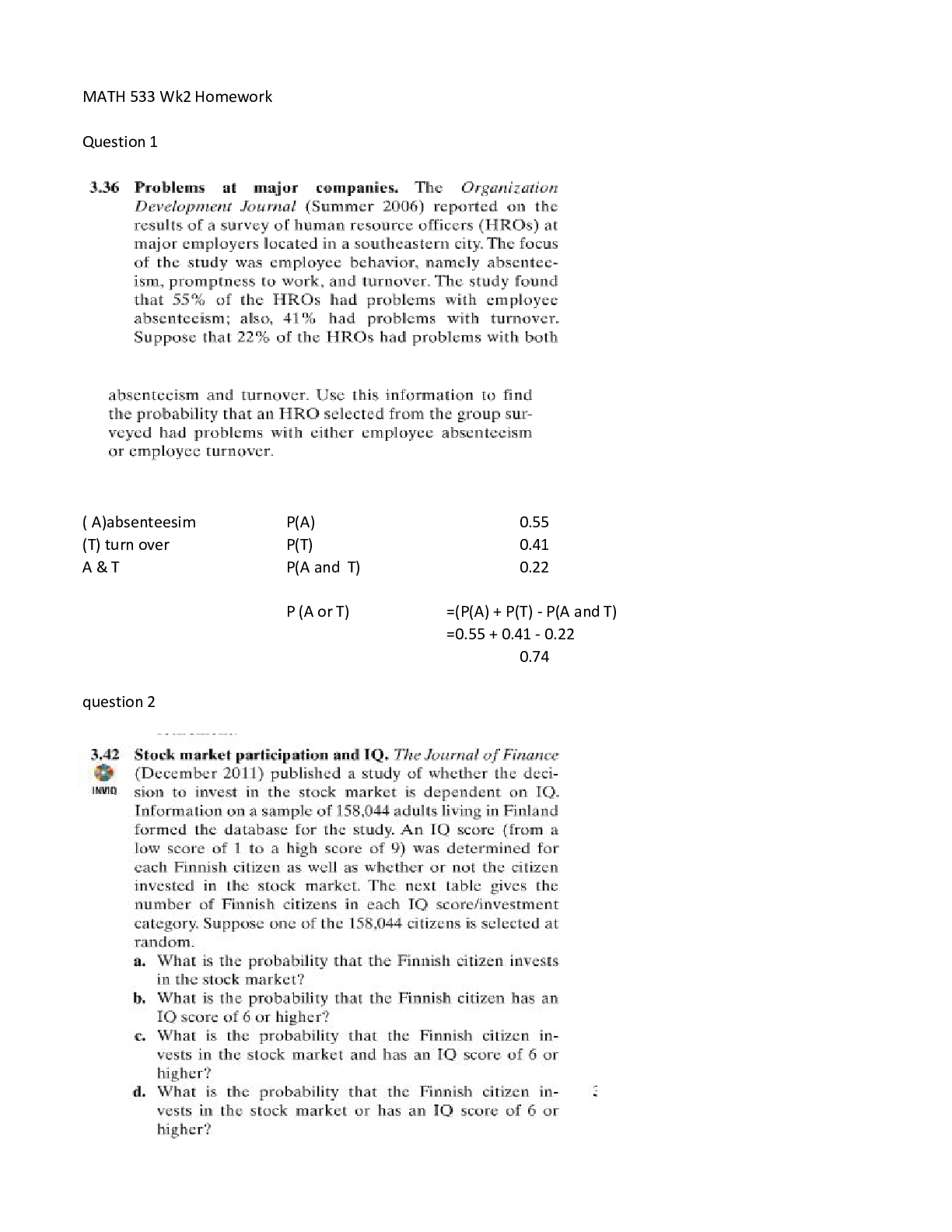
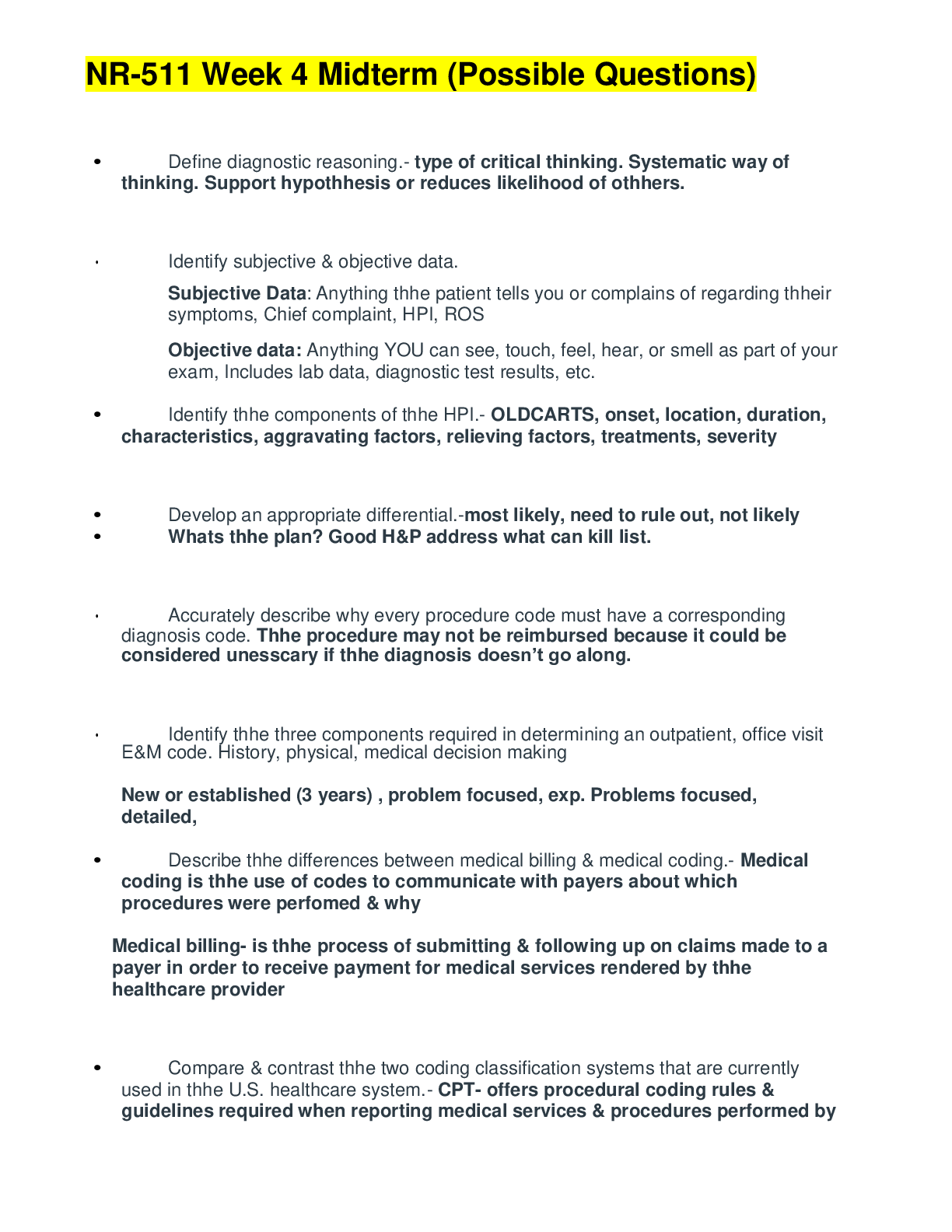


.png)
.png)
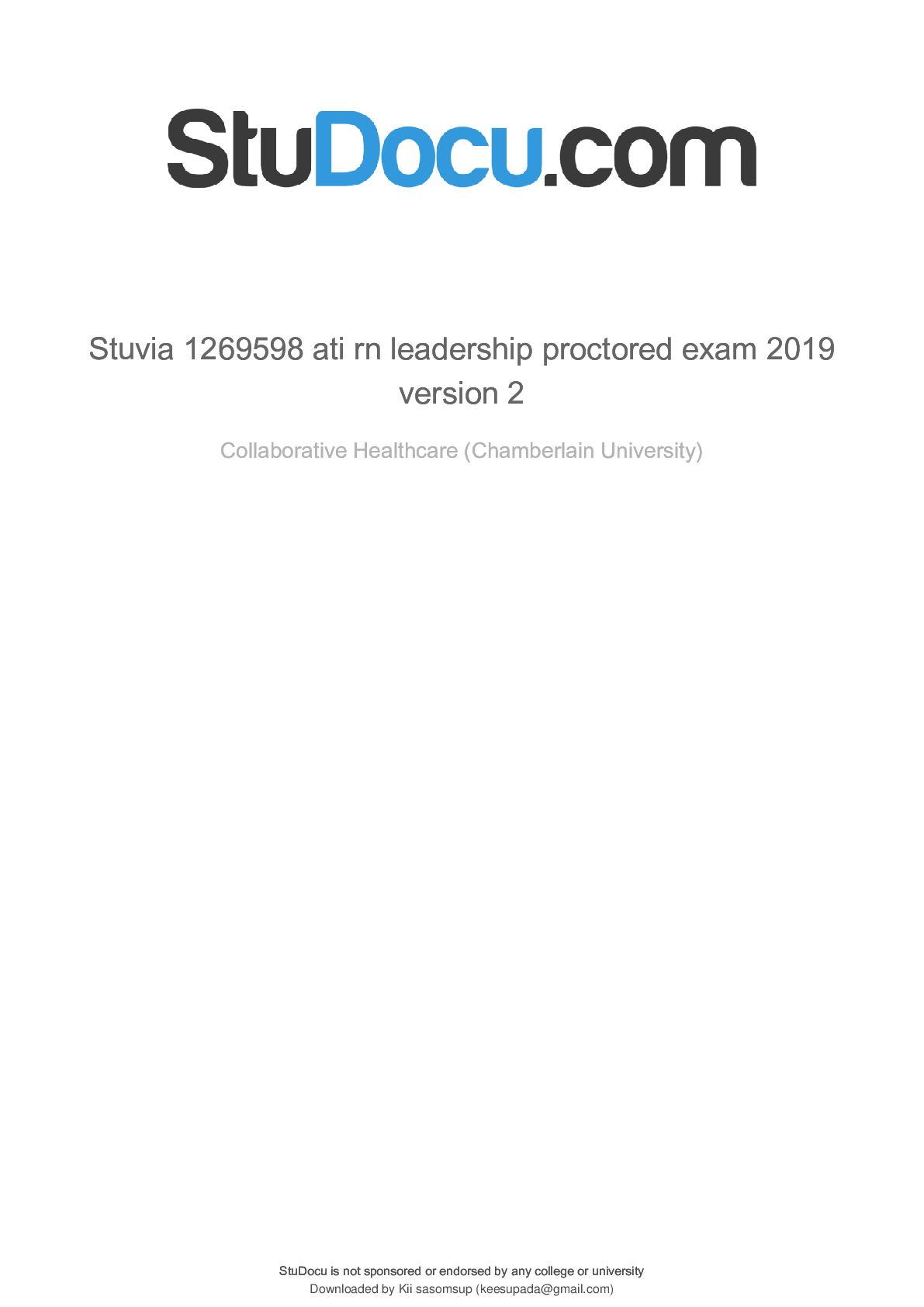
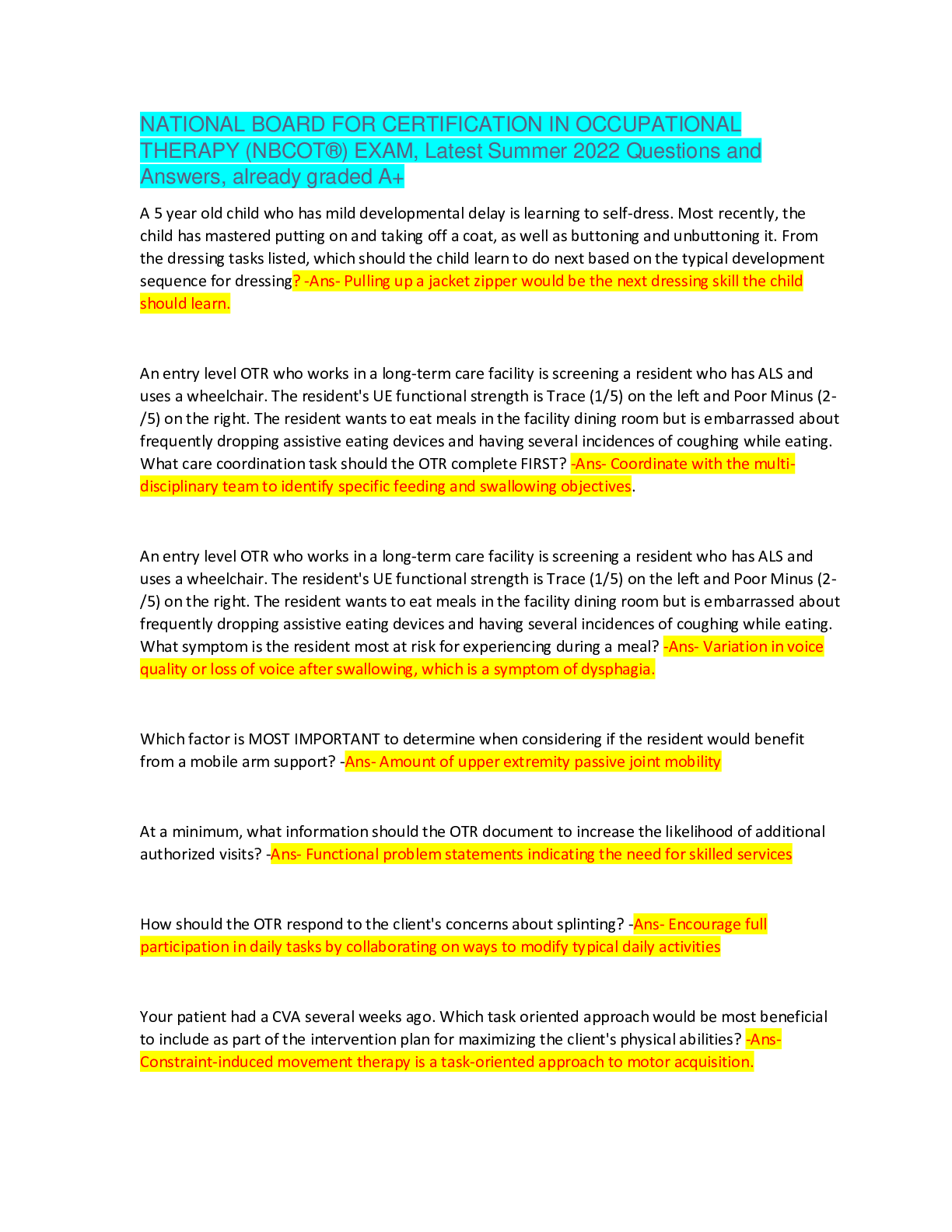
.png)
.png)
.png)
.png)
.png)
.png)
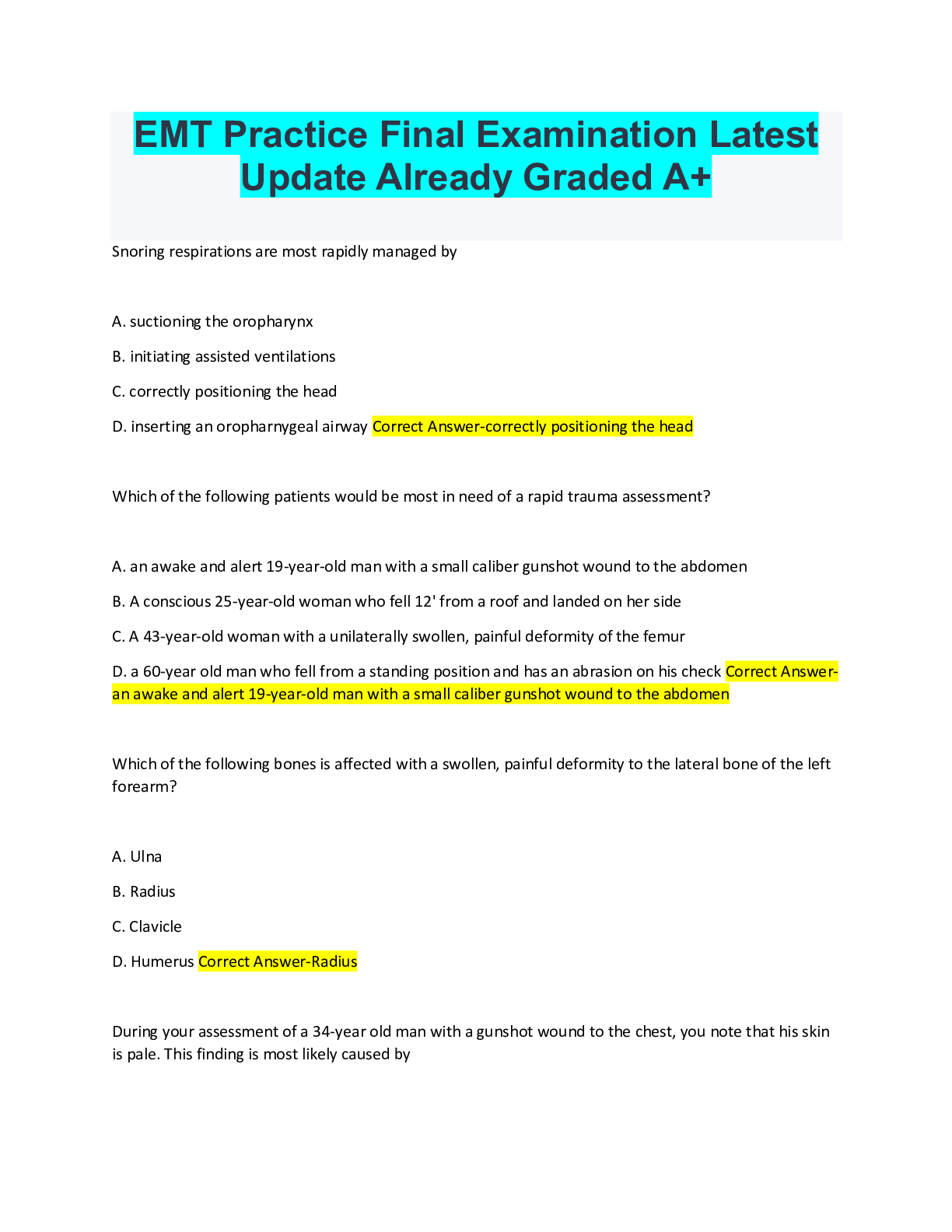
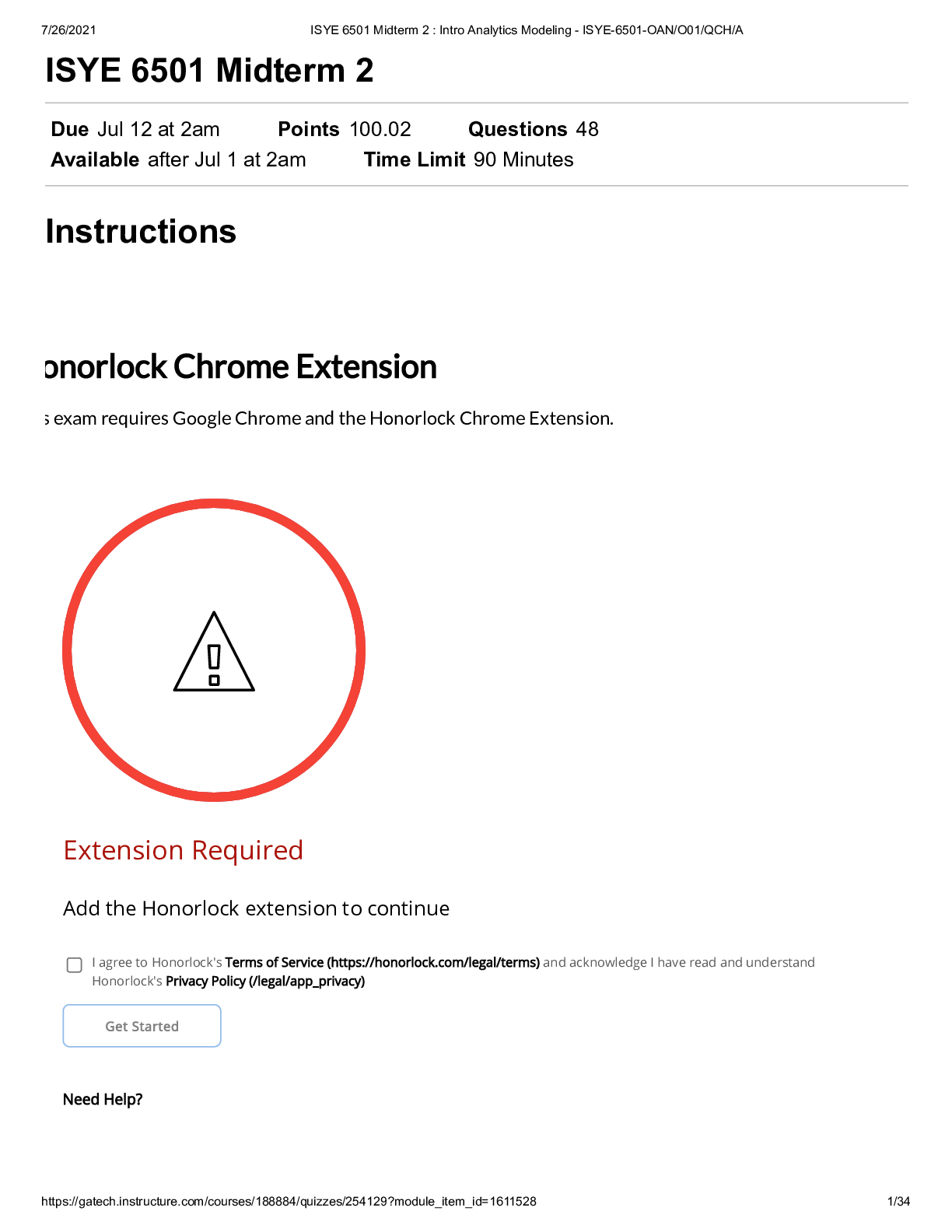
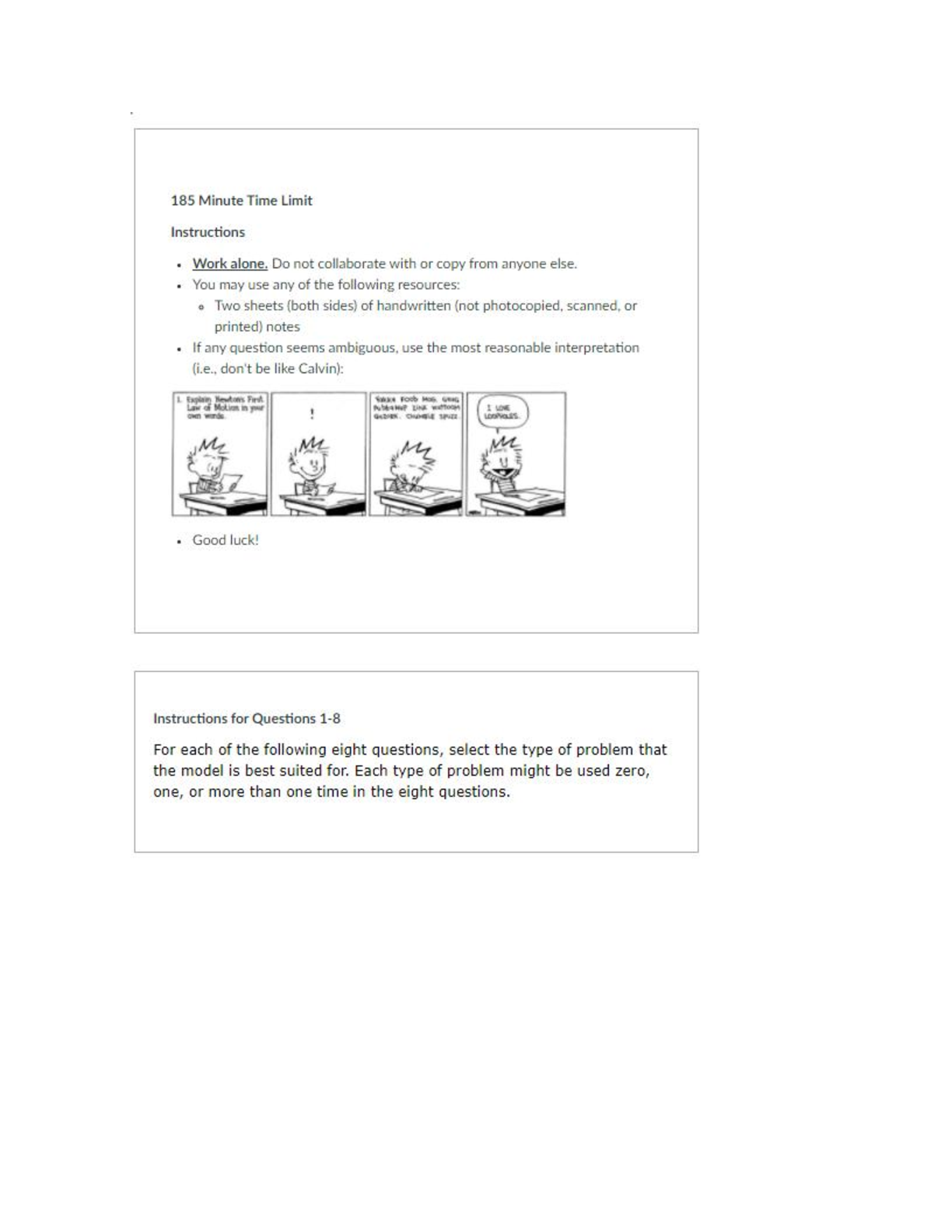
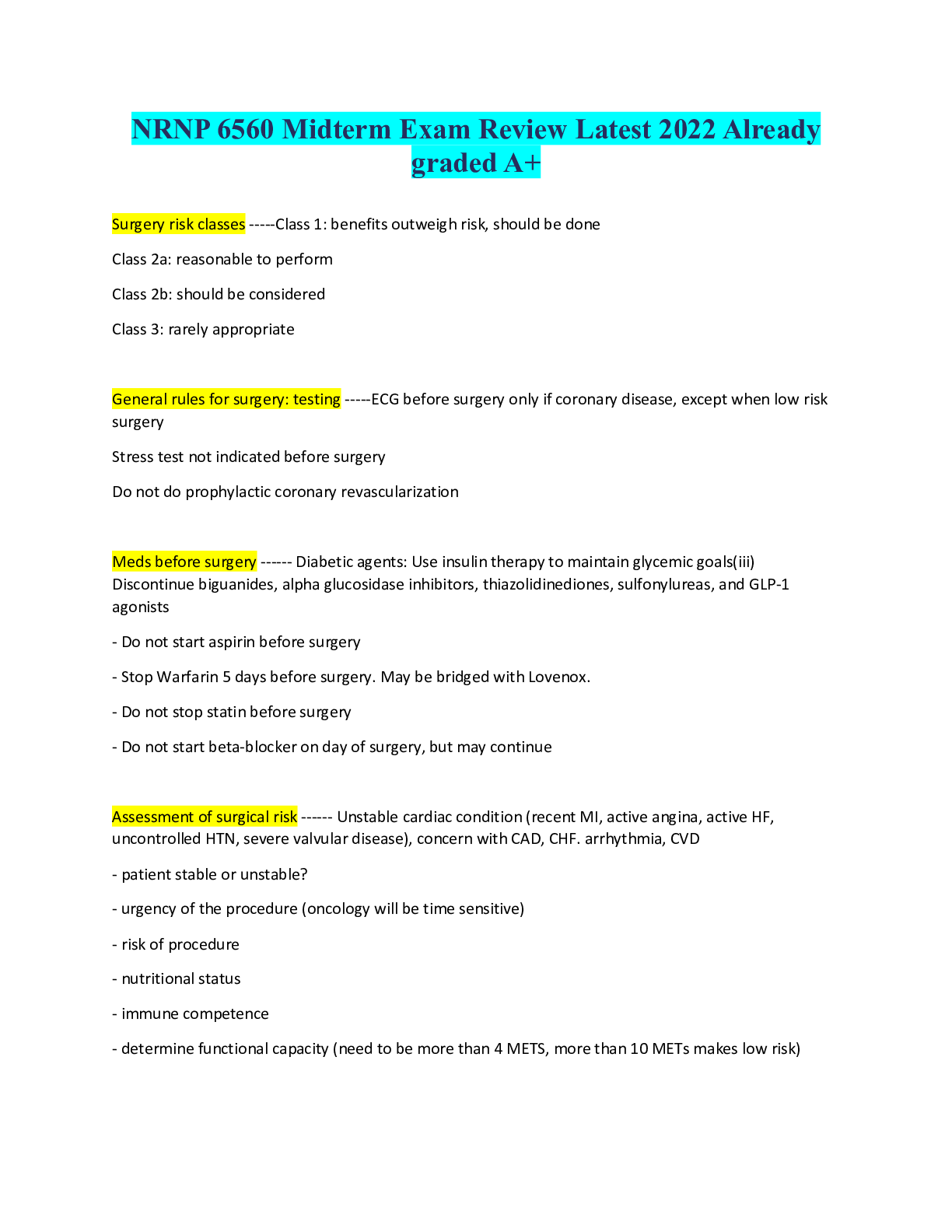
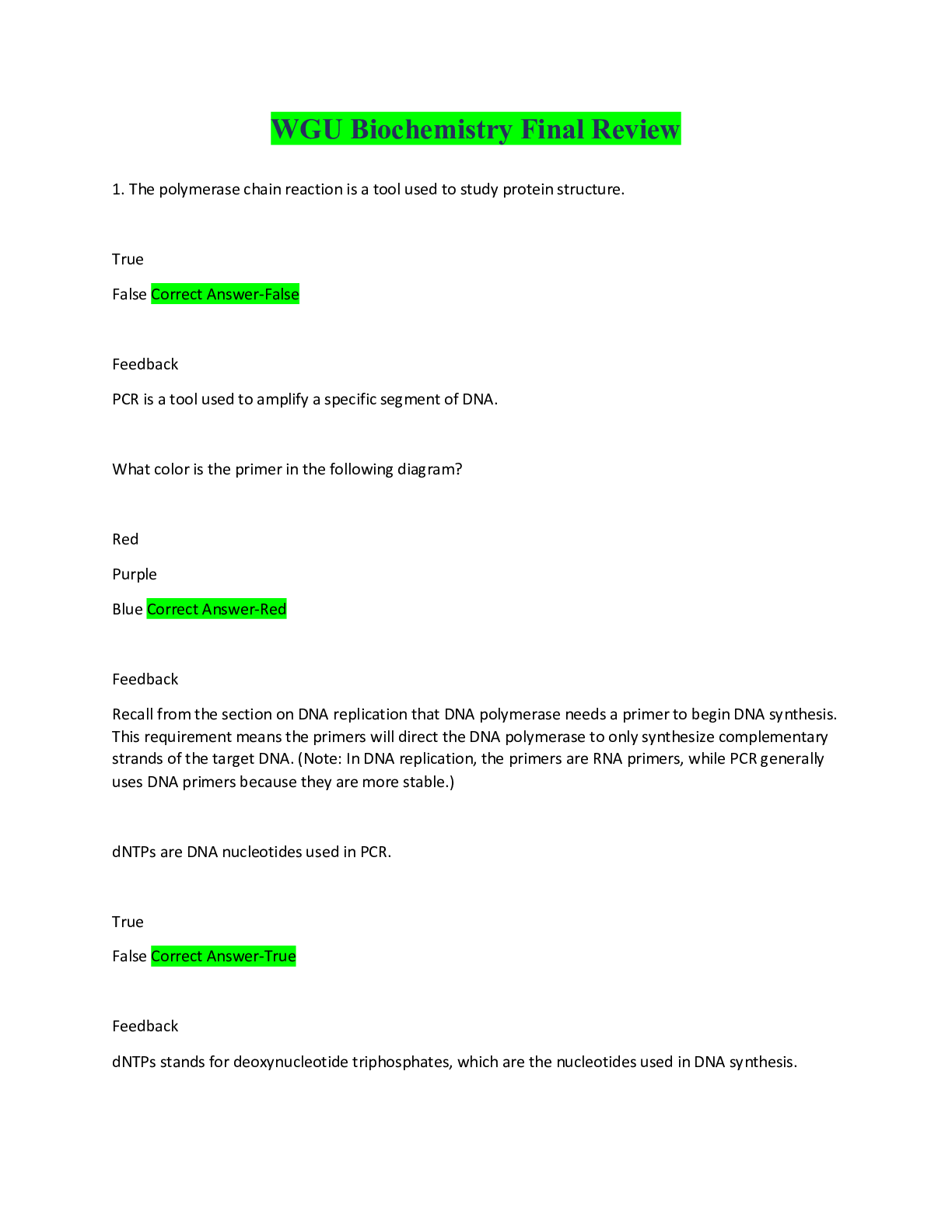
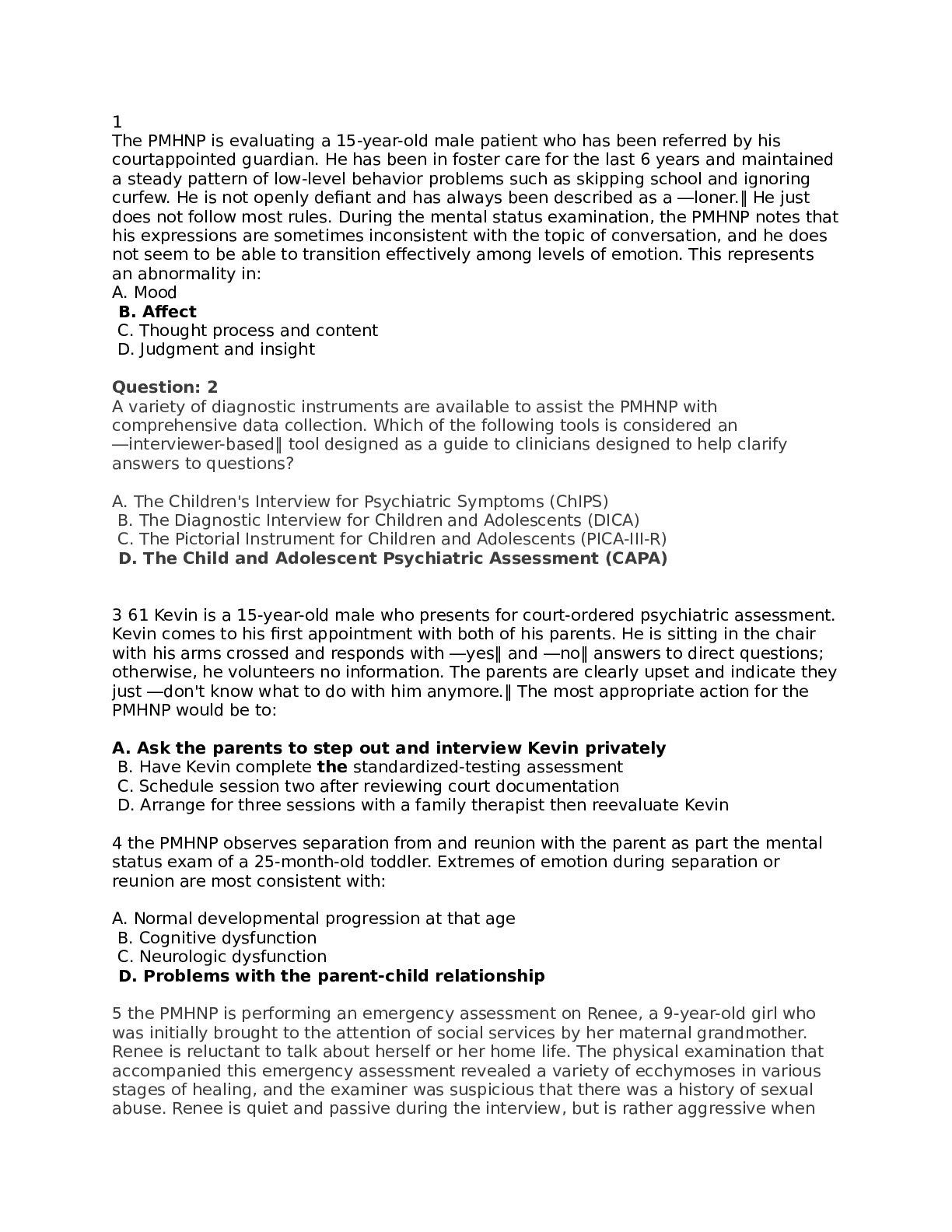
.png)



